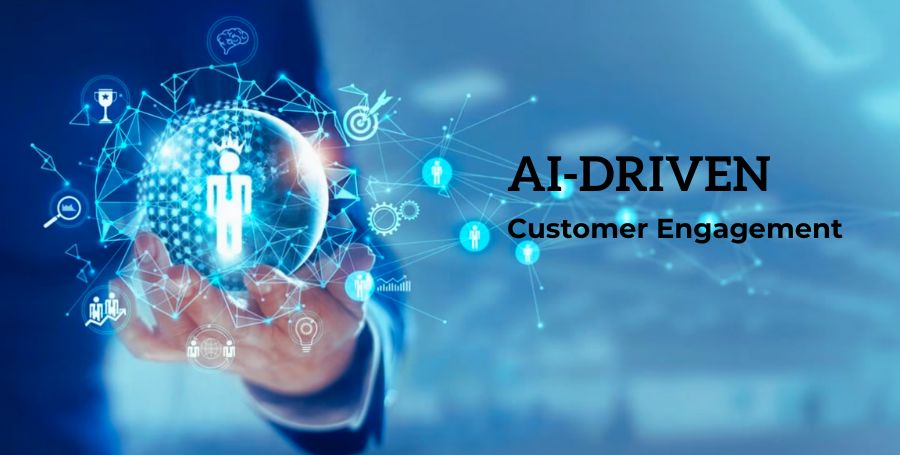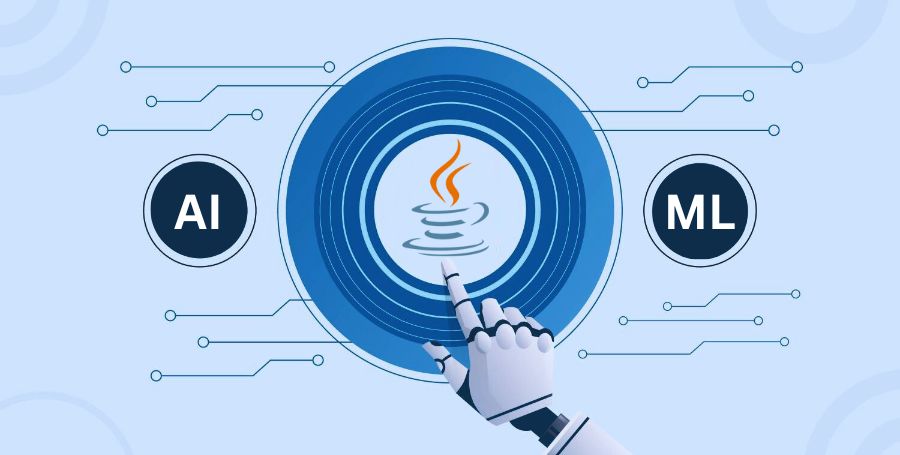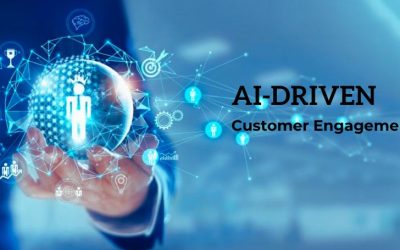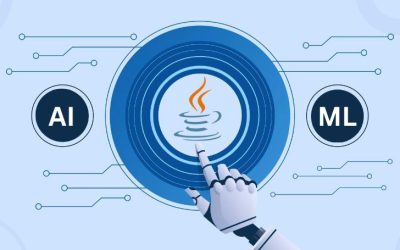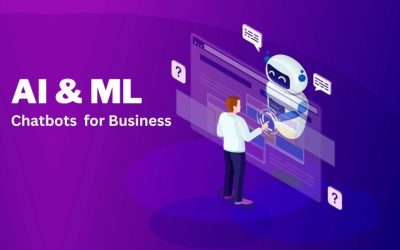Generative AI remains at the forefront of technological advancement. Generative AI has reshaped the world with enhanced creativity and critical problem-resolving ethics. AI has created significant results and advancements in the fields of art, design, and even medicine, helping doctors predict accurate diagnoses. From medical research and beyond, AI plays a tremendous role in achievements beyond human capacity.
What Exactly is Generative Artificial Intelligence
Generative Artificial Intelligence is a class of algorithms intended to create new, frequently practical data samples from existing information. Unlike traditional AI systems, Generative models can amaze to create completely new information, going from pictures and text to music and then some.
Role in Different Fields
The meaning of Generative Artificial Intelligence resounds across various areas, offering remarkable open doors for development and proficiency. In imaginative enterprises, it engages specialists and fashioners with devices to make novel craftsmanship, while in medical services, it supports drug revelation and medical image analysis. Its effect stretches out to normal language handling, where it changes how we communicate with language, and to independent frameworks, upgrading dynamic cycles.
Groundbreaking Effect on Innovative Processes
Generative Artificial Intelligence has introduced another period for innovative approaches, testing customary ideas of origin and imaginative creation. It teams up with human makers, giving motivation, producing thoughts, and pushing the limits of what is possible. This collaboration between human resources and machine innovation is reshaping the scene of craftsmanship, design, and expression.
Content Generator and Critical Thinking
From creating reasonable pictures to creating long paragraphs of text, Generative Artificial Intelligence thrives on creating new content. Generative AI Development is a new solution to address challenges from traditional AI tools in automation. Besides, its critical thinking capacities stretch beyond innovativeness to fields like enhancement, reenactment, and vital direction. The capacity to recreate situations and anticipate results positions Generative Artificial Intelligence as a valuable asset for handling complex, certifiable difficulties.
Generally, Generative Artificial Intelligence isn’t only a mechanical headway but a change in outlook, opening novel prospects and reshaping the manner in which we approach development and creation in the computerized age.
The Basics of Generative Artificial Intelligence
Let’s Explore the Foundations of Generative Models
Generative models are the backbone of Generative AI algorithms. It is the reason for creating new data concerning existing details. These models serve to create unique materials to make them the main element.
Key Models of Generative AI: Variational Autoencoders (VAEs) and Generative Antagonistic Organizations (GANs)
Investigating the essential classes of Generative models uncovers two unmistakable approaches: Variational Autoencoders (VAEs) and Generative Adversarial Networks (GANs). These hypothetical methods are far ahead of Generative Artificial Intelligence, each offering significant properties and applications.
- Variational Autoencoders (VAEs)
VAEs represent a refined Generative model engineering that spins around the standards of encoding and translating. VAEs can transform information into an inert space depiction and then convert it back to its original structure. This technique is especially compelling in errands where understanding the hidden construction of information is foremost, for example, picture age and portrayal learning.
- Generative Ill-disposed Organizations (GANs)
On another front, Generative Adversarial Organizations, or GANs, address a progressive worldview in Generative simulated intelligence. Presented in 2014, GANs introduced an unbiased preparation process highlighting two brain entities – the generator and the discriminator. The generator’s duty is to produce engineered information, while the discriminator evaluates its authenticity compared to genuine information. This antagonistic transaction between age and segregation prompts the development of progressively reasonable substance.
The Introduction of Generative Antagonistic Organizations (GANs)
Generative adversarial networks, regularly referred to as GANs, represent a critical achievement in the field of Generative AI. Introduced by Ian Goodfellow and his partners in 2014, GANs have since become the main inspiration behind the practical and high-information era.
GANs Architecture
A GAN is made up of two brain entities – the generator and the discriminator. Generators create manufactured information, expecting to create content that is indistinguishable from actual information. At the same time, the discriminator assesses the created and genuine information, endeavoring to distinguish between the two. Due to the improper connection between the generator and the discriminator, the generator’s ability to provide true satisfaction is continuously refined.
Outline of the Adversarial Preparing Cycle: Generator Versus Discriminator
The adversarial preparation process is a unique interchange between the generator and discriminator. It starts with creating the data produced by the generator and then presented to the discriminator along with the original data. The job of the discriminator is to identify whether the information presented is true or fabricated accurately. Meanwhile, the generator tries to work on its performance, expecting the discriminator to produce dynamically hard information to isolate.
This iterative and cutthroat preparation process prompts the refinement of both the generator and discriminator, at last bringing about the age of profoundly practical substance by the GAN. Understanding this primary design is essential for getting a handle on the mechanics behind the groundbreaking capacities of Generative Artificial Intelligence.
Applications and Suggestions
Picture Age
Investigation of How GANs Create Reasonable Images
Generative Adversarial Networks (GANs) have reformed the field of picture age by creating generated visuals that purposefully recreate real-world images. From understanding the work of generators to create different pictures to the discriminator’s ability to identify genuine from generated content, this investigation demystifies the mechanics behind the GAN-powered picture era.
Use Cases in Art, Design, and Entertainment Industries
The effect of GANs stretches beyond the domain of innovation. This segment enlightens the viable uses of GANs in art and design. Whether it’s producing extraordinary craftsmanship, planning virtual conditions, or improving enhancements in the entertainment world, GANs assume an essential part in encouraging imagination and pushing the limits of visual articulation.
How do Generative Models Help in Natural Language Processing?
Text generation fueled by Generative models has changed regular language handling (NLP). This segment gives a clever outline of how Generative models, like Variational Autoencoders (VAEs), and language models like GPT (Generative Pre-prepared Transformer), are utilized to make intelligent and logically significant text. From ChatGPT chatbots to content creation, the uses of text age in NLP are assorted and effective.
Moral Contemplations in AI-Produced Content
While Generative AI enables the making of text, it likewise raises moral contemplations. This part of the talk examines the ethical elements of AI-generated content, addressing concerns related to fraud, bias, and careful use of language models. It underlines the importance of ethical rules and AI improvement practices to overcome the expected adverse consequences.
How Generative Artificial Intelligence Changes Modern Tasks?
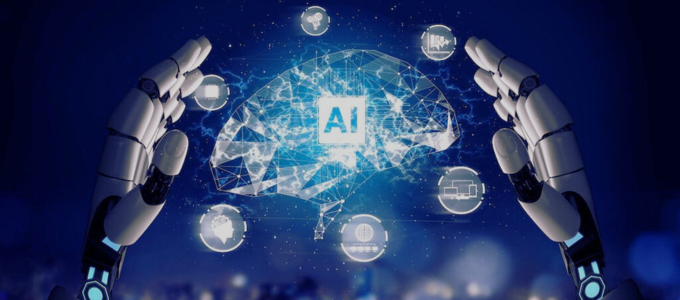
As modern organizations strive to overcome barriers to capturing the maximum potential of Artificial Intelligence, innovation continues to evolve. Advances in, for example, massive language models and their use in Generative AI have opened new doors. How does this cutting-edge innovation vow to change modern activities?
Three principal kinds of Generative simulated intelligence applications in the assembly climate:
Giving Data Support
In the modern setting, deep-rooted Generative AI models and devices are working like ChatGPT can be utilized to naturally produce text to help tasks. Applications support gear maintenance, for example, by creating maintenance manuals or standard operating strategies for remote help.
Changing Data Over Completely to Yield
Generative Artificial Intelligence Applications prepared to switch text over completely to code or pictures permit organizations to speed up assembling related processes. For example, in process mechanization by production of program code given text input.
Upgrading Mechanical Technology
Generative Artificial Intelligence in advanced mechanics is committed to empowering robots to follow natural paths. For example, voice commands without the need for task-specific preparation and standard retraining. This deals with new application areas for advanced mechanics in modern activities, such as robotized material or device supply, which would permit organizations to increment creation effectiveness while lessening designing expenses and increasing times.
General Advantages of Generative AI
Let’s have a glimpse of the impact of Generative AI on its users.
- Generative AI has revolutionized the Art and design industry.
- Artists and developers level up using this algorithm to create unique, varied, and often realistic visual elements and code.
- Human creativity and machine-generated insights result in a dynamic landscape for artistic and design innovation.
Challenges in Generative Artificial Intelligence
- Understanding the human context.
- May produce outdated content.
- May produce biased AI outputs.
- Lack of creativity of a human.
- This may produce inconsistent outcomes, which may be unpredictable in business, especially.
- High energy consumption.
- Lack of common sense understanding like a human does.
- Requires a lot of privacy and security checks.
- This may lead to job insecurity and displacement.
- May rarely provide misleading information.
Techniques for Defeating Specialized and Moral Hurdles
Creative systems are essential for dealing with these difficulties. Here, we investigate a scope of ways to deal with addressing both specialized and moral obstacles. From refining model designs to executing influential moral structures, these systems plan to move the field of Generative AI forward dependably and reasonably.
Building Smart Cities of Tomorrow
Ai is prepared to influence the future in a significant way, impacting various areas of our lives and endeavors. Here are key ways Artificial Intelligence will form what’s to come.
Automation and Efficiency
Artificial Intelligence will keep mechanizing routine assignments, upgrading productivity across enterprises. This mechanization extends from assembly and strategies to client support and regulatory capabilities.
Personalized Experiences
Artificial Intelligence calculations will power more customized encounters in areas such as entertainment, online business, and training. Customized suggestions, content, and administrations will become the standard.
Healthcare Advancements
Artificial Intelligence will change medical services by developing diagnostics, drug discovery, and therapy plans. Prescient examination and simulated intelligence-driven models will improve patient consideration and results.
Autonomous Vehicles
The future will observe the far-reaching reception of independent vehicles fueled by AI. This innovation guarantees more secure and productive transportation frameworks.
Smart Cities
AI will play a significant role in creating smart urban communities. Canny frameworks will improve energy utilization, traffic streams, and public administrations, establishing more practical and reasonable metropolitan conditions.
AI in Education
Customized opportunities for growth, savvy coaching frameworks, and versatile instructive apparatuses will become ordinary, taking care of individual understudy needs and cultivating more compelling learning.
Advancements in Robotics
AI-driven robots will turn out to be more modern, upgrading their abilities in fields like assembling, medical care, and investigation. Human-robot coordinated effort will increase.
Cybersecurity
Artificial Intelligence Development will be urgent in strengthening network safety protections. AI calculations will continuously identify and prevent digital threats guaranteeing the security of the computerized framework.
Environmental Monitoring
AI-controlled sensors and observing frameworks will support natural protection. From anticipating cataclysmic events to overseeing assets, AI will add to economic practices.
Innovation in Creativity
Craftsmanship, music, and writing produced by Artificial Intelligence will become more powerful, pushing the limits of imagination. In order to create stimulating and notable works, Craftsmen and makers will work with simulated intelligence apparatuses.
Conclusion
In outline, Generative AI will be a groundbreaking power, molding the future by driving development, improving proficiency, and tending to complex difficulties across different areas. As these headways unfurl, the mindful turn of events and moral sending of AI will be urgent to bridle its maximum capacity to support humankind.



